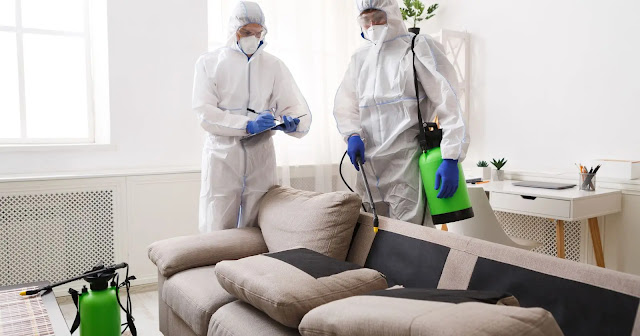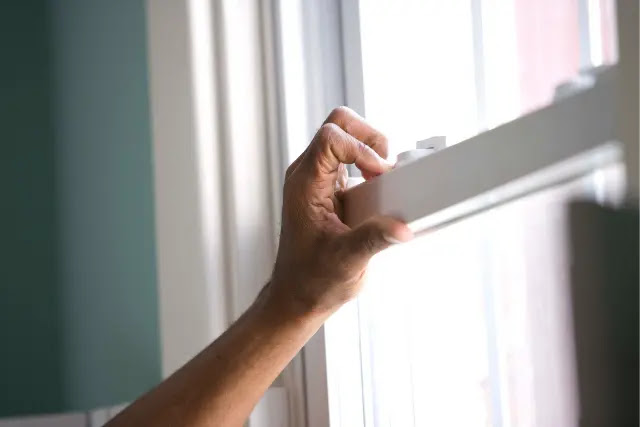Pest control is incredibly important when it comes to maintaining a safe and healthy living environment. Rodents, insects, animals, and other pests can carry diseases or damage property. Managing them effectively requires the use of pest control measures such as trapping, spraying pesticides, or removing infested nests. In addition, eliminating an existing infestation is key to preventing future problems from developing.
But while pest control can be incredibly helpful in protecting homes from disease-carrying critters and ensuring that they're structurally sound for years to come, many people wonder whether it's safe to be in their house after a treatment has been completed – which leads us to our question: Is it safe to be in the house after pest control? Read on to learn more!
{tocify} $title={Table of Contents}
What Happens During a Pest Control Treatment?
Depending on the type of pest problem you are facing, there are various methods used for pest control. These can range from common DIY methods such as spraying insecticides directly onto an area with infestation to more direct contact methods like fumigation and trapping. Common pesticides and chemicals used in these treatments may include aerosols, baits, or dust. The chemicals have the potential to be hazardous, so proper safety precautions should always be taken when using them.
If a house has been infested with pests such as bed bugs, fumigation is usually one of the best ways to get rid of them. The process involves covering part or all of the building with a tent and pumping gas inside. This will kill any insects and larvae in the area, after which airtight sheets are used to stop any fumes from escaping into other living areas of the home.
The main benefit of fumigation is efficiency; but, on a less positive note, this method involves releasing chemicals into an indoor environment. If done improperly and without proper precautionary safety measures, these chemicals can seriously harm people living in the affected area or create adverse environmental impacts outside.
Safety Precautions Before and During Pest Control
Before the professionals doing a pest control treatment arrive, it's important to prepare and take the necessary precautions. This will help keep your living space safe and make sure everything is successful. Make sure you cover any food items in airtight storage containers. Take out all dishes or other things from cupboard shelves, and cover exposed surfaces with plastic sheeting or old sheets.
Wipe off countertops and other highly soiled spaces before they come too, like pet supplies such as litter boxes, cages, and toys-just give it a good cleaning! When it comes to outdoor treatments that involve yard space, keep any water sources (birdbaths or dog bowls) away during application time as well as keep children’s play things clear of whatever is going down out there too.
When the technician arrives for the service call, make sure to give them access to any area where pests may be present. This could include areas like behind furniture pieces and inside drawers, basements, attics (if applicable), and crawlspaces. The technician will know which specific areas need more attention due to the high activity of pests. Be sure to take their advice seriously when they recommend how best to proceed after observing what they saw. After the job is done make sure that all contaminated materials are thrown right away or stored outside until a professional comes with instructions on how to properly dispose of it.
Safety Concerns Immediately After Pest Control
It is generally safe to be in the house immediately after a pest control treatment has been completed. Pest control organizations take appropriate safety precautions by using products that are licensed by the relevant regulatory body, such as the Environmental Protection Agency (EPA). However, there are still potential health risks that should not be disregarded before returning to the home and perhaps taking extra precautionary measures to protect oneself.
When it comes to pesticides, exposure can cause a range of health problems. You might experience irritation in your nose, throat, and skin upon contact. Additionally, dizziness or difficulty breathing are common symptoms that people report after coming into contact with these chemicals. Nausea, vomiting, confusion, and headaches have also been reported due to pesticide exposure. In more severe cases you could experience fever as a result of fumigation pesticides. Lastly, if you're allergic or sensitive to certain insecticides used for urban pest management programs then you may have an adverse reaction when exposed to them.
If you've been exposed to pesticides, you should get medical attention right away. Your doctor must know that you were exposed to a pesticide, so they can make sure it hasn't caused any long-term issues. When going back into your house after treatment, stay out for the recommended time and wear protective clothing and a face mask just in case there are any residuals or droplets of the pesticides.
Timeframe for Re-entry Into the House
When it comes to pest control, it can be hard to know how long you should wait before entering your home again after treatments have been done. The amount of time varies based on the type and scope of work performed, as well as environmental or structural aspects particular to your home. Generally speaking, if an exterminator used a chemical solution inside then you should wait at least two or four hours before returning. If they used a fogger or aerosol bomb, however, then 24-48 hours would be best since these solutions contain hazardous chemicals that will take some time for the air to clear out.
When it comes to baits, you don't need to leave your home. A single pest control service visit should be enough. However, when it comes to more involving services such as fumigations and termite treatments that require digging around the foundation of your house, this could mean evacuating for several hours or even days depending on the infestation and what products are being used (which can include highly hazardous substances). That's why it's so important to always follow instructions given by professional exterminators or certified pest control operators before re-entering treated areas - for best results and maximum safety.
Ventilation and Cleaning
Proper ventilation is essential after pest control treatment to minimize exposure to any residual chemicals that were used, as well as flush out any odors that may remain. Without proper ventilation, these potential hazards can adversely affect the health of those living in the house.
To achieve effective ventilation following a pest control visit, rooms, and hallways need to be regularly aired out by opening windows near ceilings for cross-ventilation purposes. Additionally, fans can also serve an important purpose concerning air circulation within the house after treatment.
After a pest control visit it's also important to do some thorough cleaning. Vacuuming carpets and furniture can help get rid of any debris that might lead to another infestation if left alone. Wiping down all hard surfaces, such as counters, benches, cupboards, and drawers, with warm water mixed and natural cleaners like dish soap or vinegar helps as well.
Factors to Consider for Vulnerable Individuals
In general, it is considered safe to be in a home after pest control. However, for vulnerable individuals such as infants, pregnant women, and pets extra caution and preparation should be taken. To ensure their safety during the pest control process it might be best to temporarily move them out of the house until direct contact with any pesticides or other chemical applications has ended. When returning home, make sure all windows are open to help naturally air out the area.
It is also important to check labels on pesticide products for re-entry time instructions which will give further specific guidance regarding when humans can enter into recently treated spaces safely again. If there are any additional concerns about exposure contact your local health department for recommendations before allowing sensitive people or pets back inside of recent treatment areas of the home.
Conclusion
It is important to note that extermination products are different, so it is best to rely on professional advice regarding when it is safe to return to the house. Generally speaking, any fumes or smoke from such treatments should not remain present for more than four hours after completion. Humans and pets can safely re-enter the space at this point unless otherwise directed by a professional exterminator or pest control technician.
In some cases, where chemical insecticides have been used, they will need time to dry down before it is deemed safe again. The ultimate aim of using insect treatment products in residential properties remains to ensure human safety as well as get rid of unwanted pests quickly and effectively with minimal risk. Make sure you wait for the recommended amount of time before coming back inside. Don't forget to ventilate the room!



